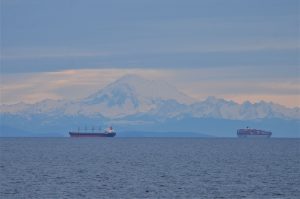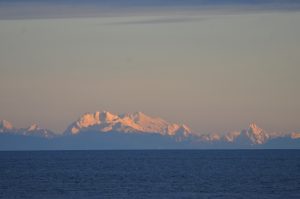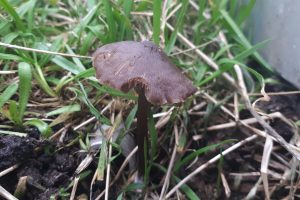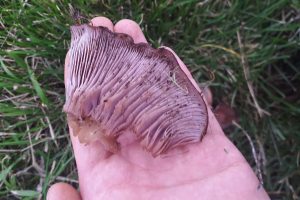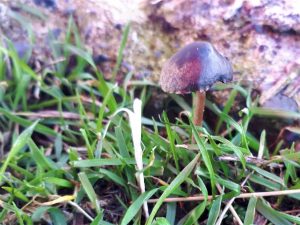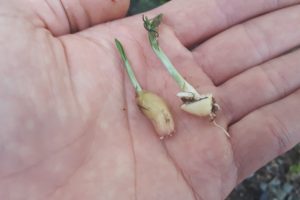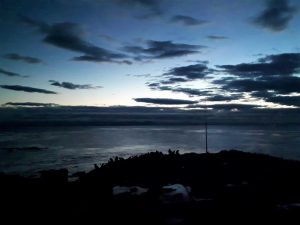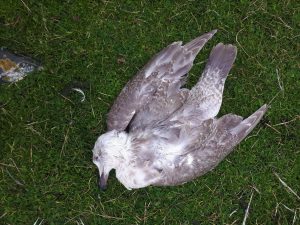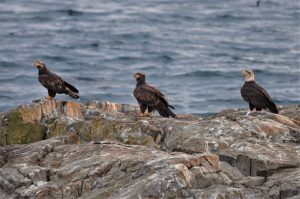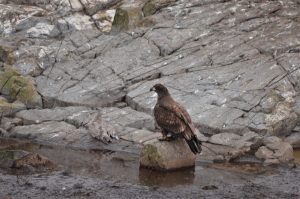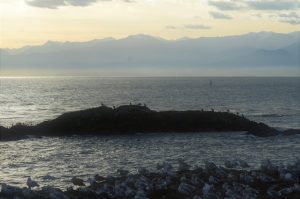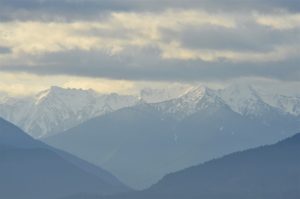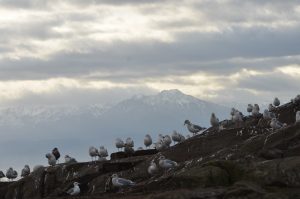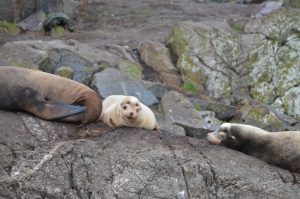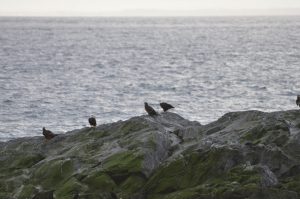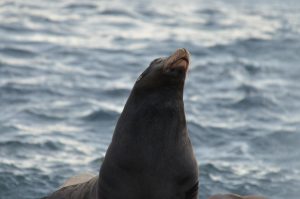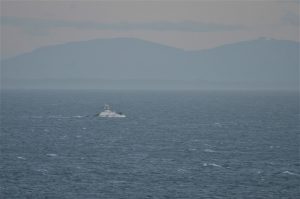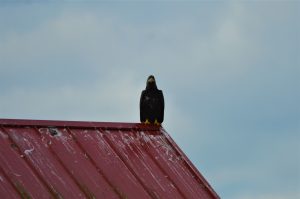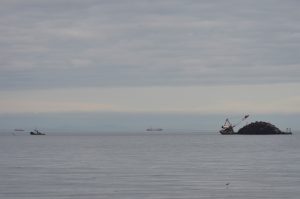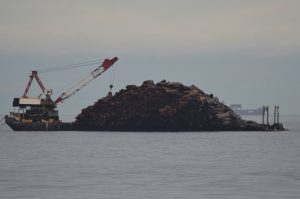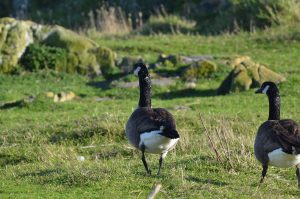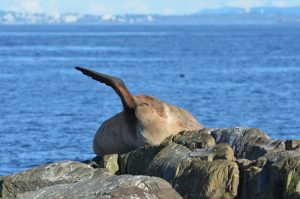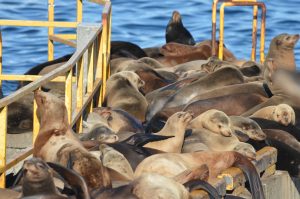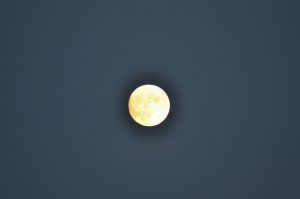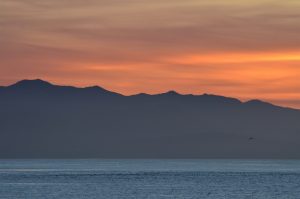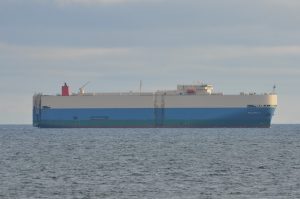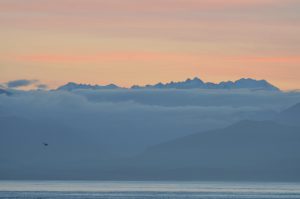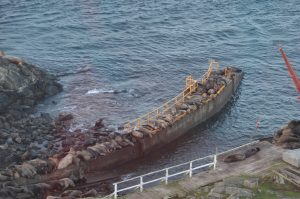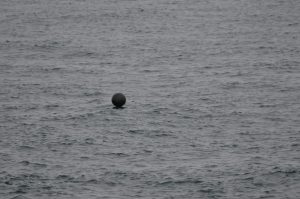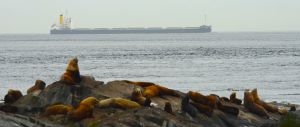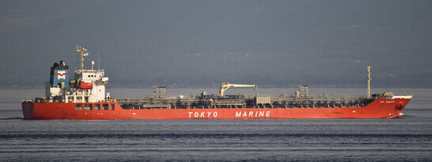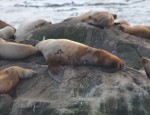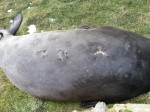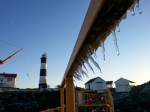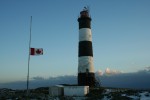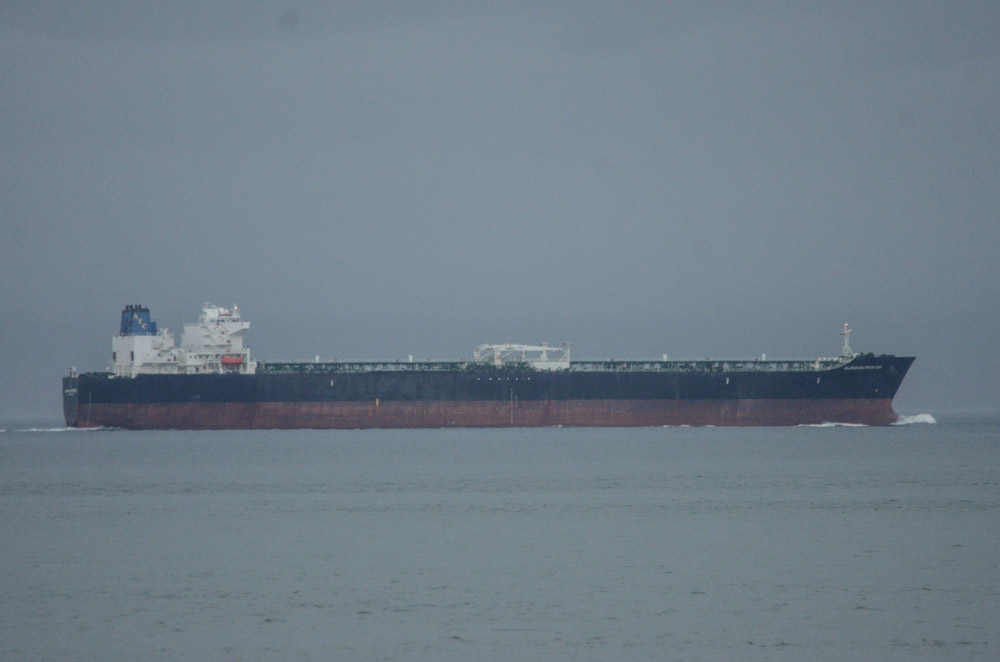Weather Today:
- Visibility 14 NM
- Sky partially overcast
- 30-55 Knots SW
- Sea state: swells up to 2m, otherwise 3-4+ ft chop
Visitors/Traffic: Nothing other than a few fishing and shipping vessels in the strait.
Ecological Notes:
- We found another apparently healthy gull dead today; this is the fourth one since the beginning of the month. We now have two preserved for necropsy, which we hope to transport to land soon to be investigated. They have all displayed the same odd symptoms: weakness in the wings progressing to unable to move, wings dropping to the sides, and unable to make any sound.
- This week there have been an incredible number of cormorants in the reserve! An underrated bird, they are very fun to watch as they waddle, preen, and fish.
- We’ve been noticing some fungi popping up around the island now that we are into the rainy season! Photos below. These are in addition to the shaggy mane mushrooms we found last spring fruiting beside the composters.
- Last week we spotted another “neck wrap”: a california sea lion with some kind of pollution material embedded into his neck. Unfortunately it seems that he is no longer present in the reserve, making a rescue improbable.
Census:
- 4 black oystercatchers
- 1 dunlin
- 1 ruddy turnstone
- 9 black turnstones
- 3 surfbirds
- 500 Thayer’s gulls
- 17 Canada geese
- 1550 Cormorants (wow!)
- 2 bald eagles
- 100 stellar sea lions
- 502 California sea lions
- 2 harbour seals
- Mount Baker
- Could this be three fingers to the right?
- Fungi found around the island (1)
- (2)
- (3)
- Sprouts uprooted by turnstones
- Codar antenna + sea lions at dusk
- Another mysterious gull death
- Three bald eagles waiting for the perfect prey
- An eagle watching over the island + possibly another sick seagull to the left
- We have had an incredible number of bald eagles this week
- California sea lion basking in his favorite spot
- Olympic Mountain Range (WA)
- A raven checking out the island
- A tiny california sea lion
- Windy day to be out fishing!
- More eagles on the south islands
- Cormorants bickering
- A fishing vessel braving the rough waters today
- A peeping tom!
- These geese seem to have mild leucism, like the one we saw a few weeks ago
- This month’s full moon
- Vehicle Carrier
- Sea lions hauled out onto the jetty
- A balloon bouncing through the passage. A weather balloon?
